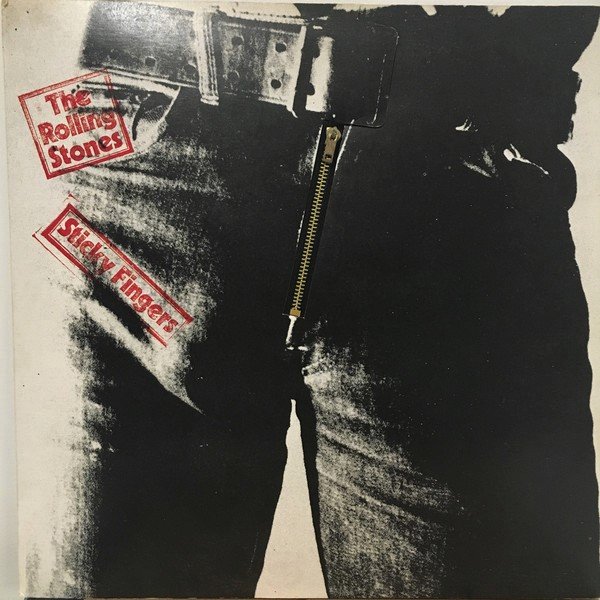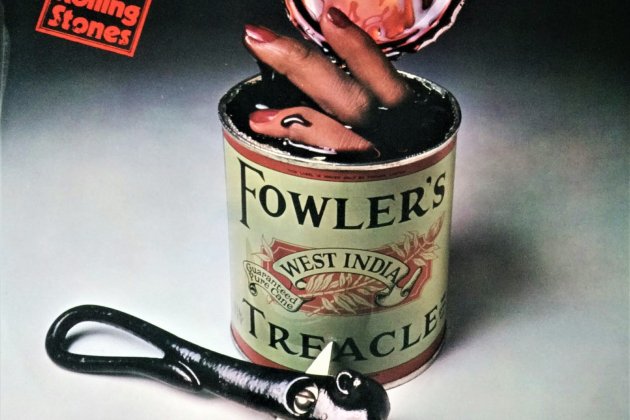On April 13th, 1971, that is, exactly 50 years ago, Their Satanic Majesties, the Rolling Stones, released "Brown Sugar." Allegory to the heroin with which they were flirting dangerously at the time, this is one of the most representative tunes of their album Sticky Fingers and one of their most popular singles.
The pure essence of the Rolling Stones
Sticky Fingers the album was released a few days later on April 23rd - as it happened, Sant Jordi's Day, day of culture and romance in Catalonia. It was the first record the Rolling Stones had released on their own label; the first in which they used their iconic Hot Lips logo. A true work of reference by Jagger, Richards and company, it is one of their finest, second installment in a pluscuamperfecto trilogy begun two years earlier, in 1969, with the album Let It Bleed and culminated a year later, in 1972, with Exile on Main St.

Original version of the cover of the Sticky Fingers album by the Rolling Stones
Containing immortal tunes like "Wild Horses", "Sister Morphine", "Dead Flowers" as well as "Brown Sugar", Sticky Fingers, a disc that the Stones recorded between December 1969 at Muscle Shoals in Alabama, one of the most iconic and essential studies in rock history, and the winter of 1970 in Stargroves, Mick Jagger's English manor house near Newbury, represents the purest essence of their sound. As the Britain's Q Magazine described it two decades later: "The Stones at their peak ... a magical formula of heavy soul, drug addicted blues and macho rock."
Sticky Fingers, the first album featuring Mick Jones as replacement for original guitarist Brian Jones, was an absolute hit with both audiences and critics. In England it climbed to number 1 on the charts in mid-May. It remained there for four weeks solid. In the United States it went straight to the top of the album charts the moment it saw the light, and also parked there for a whole month.
The prohibited cover
Beyond the music, one of the most iconic elements of Sticky Fingers is its cover. Designed by Andy Warhol, the cover shows a pair of jeans with a real zipper that opened, suggesting some white briefs beneath, which end up being completely exposed in all their glory when you open the gatefold. The photo of the crotch, with anatomy provided by model Joe Dallesandro, one of those fascinating creatures in the entourage of Warhol's Factory, suggested that the model was certainly a well-endowed man.

Franco's version of the cover of the ninth album of His Satanic Majesties
In 1971 the Franco dictatorship was beginning to loosen its reins in some facets. However, it remained a dictatorship that censored everything it found obscene, depraved, or anti-regime, including the Sticky Fingers record cover and Dallesandro's bulge. That's why in Spain the album hit the record stores with a different cover from the rest of the world. The Francoist version of the cover of the ninth studio work by the Stones, reproduces the work Can of Fingers by designers John Pasche and Phil Jude: a treacle can from which three blood-covered female fingers are protruding. In fact, a much more unpleasant image than the original cover.
It was not the only aspect that Franco's officials removed from the record. They also censored "Sister Morphine", a song with Rolling Stones music and lyrics by their muse Marianne Faithfull, verses which narrate the agony of a man admitted to a hospital after an overdose and his desperation to feed his habit. In the Spanish version of the disc, "Sister Morphine", one of the key songs on the album, was replaced by a live cover version of Chuck Berry's "Let It Rock".

